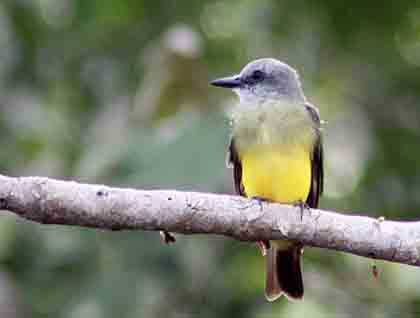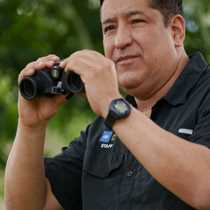We had an early pre-breakfast skiff ride along the Marayali Caño to take advantage of the early hours of the day, for they are among the best ones for spotting wildlife in the rain forest. This black water stream was as its best today for we saw several bird species that enhanced our wildlife list of the week.
Once on board and after a superb breakfast we visited San Francisco community. This town located very near the confluence of the Ucayali and Marañon Rivers is simply delightful. For a couple of hours we watched the reality and experienced how people live nowadays in the Amazon. One of the highlights of this cultural visit is a very informal encounter with members of this community who are beneficiaries of Minga Peru. The latter is the organization that Lindblad Expeditions chose to help using the National Geographic Fund (LEX-NG Fund) in the Upper Amazon in Peru. Minga Peru, a non-profit organization founded in 1998, has as a mission the promotion of social justice and human dignity for women and families in the remote rural areas of the Peruvian Amazon.
We visited the local town meeting house as well. Children are out of school at this time of the year but greeted us in this building with songs in Spanish and our guests replied and interacted with them a couple of songs in English. We visited the community beautifully organized handcrafts market before coming to the ship for our next activity of the day. A strong but refreshing rain fell in the area reminding us that we are in fact visiting one of the wettest ecosystems on Earth.
Close to midday we had a very special celebration. The ship was located in the famous confluence of the Marañon and Ucayali Rivers, the geographical place where the Amazon River takes its name. We toasted this important event with the exotic “cucchuazo,” a local Amazon drink prepared with seven roots!
In the early afternoon we had a photo talk on composition with our photo instructor Steve Morello. Right after the talk was over we went to swim in Clavero Lake. We came back to the ship just in time to continue with the rest of the activities planned for the afternoon: kayaking and skiff riding.
The highlight of this outing was the rare encounter of a porcupine, which is not a common sighting at all. In fact it is the second porcupine spotted in this year! This critter was found resting on an upper branch of a tree. It was very well camouflaged. The skills and incredible sight of one of our most talented Delfin II skiff drivers, Primo Puga, let all of us enjoy this rather uncommon view of this elusive mammal. Porcupines belong to the Erethizontidae family. In this group of mammals all members have stout, sharp spines, prehensile tails, feet with long claws, and show inconspicuous ears. Neotropical porcupines´ taxonomy is still unclear, difficult, and some natural history and ecological details are poorly known.
After dinner we watched a nature documentary entitled “Amazon, River of the Sun” that gave us a broader understanding of the annual changes between the dry and wet seasons in the Amazon Basin and the adaptations of the Amazon inhabitants to such dramatic changes.







